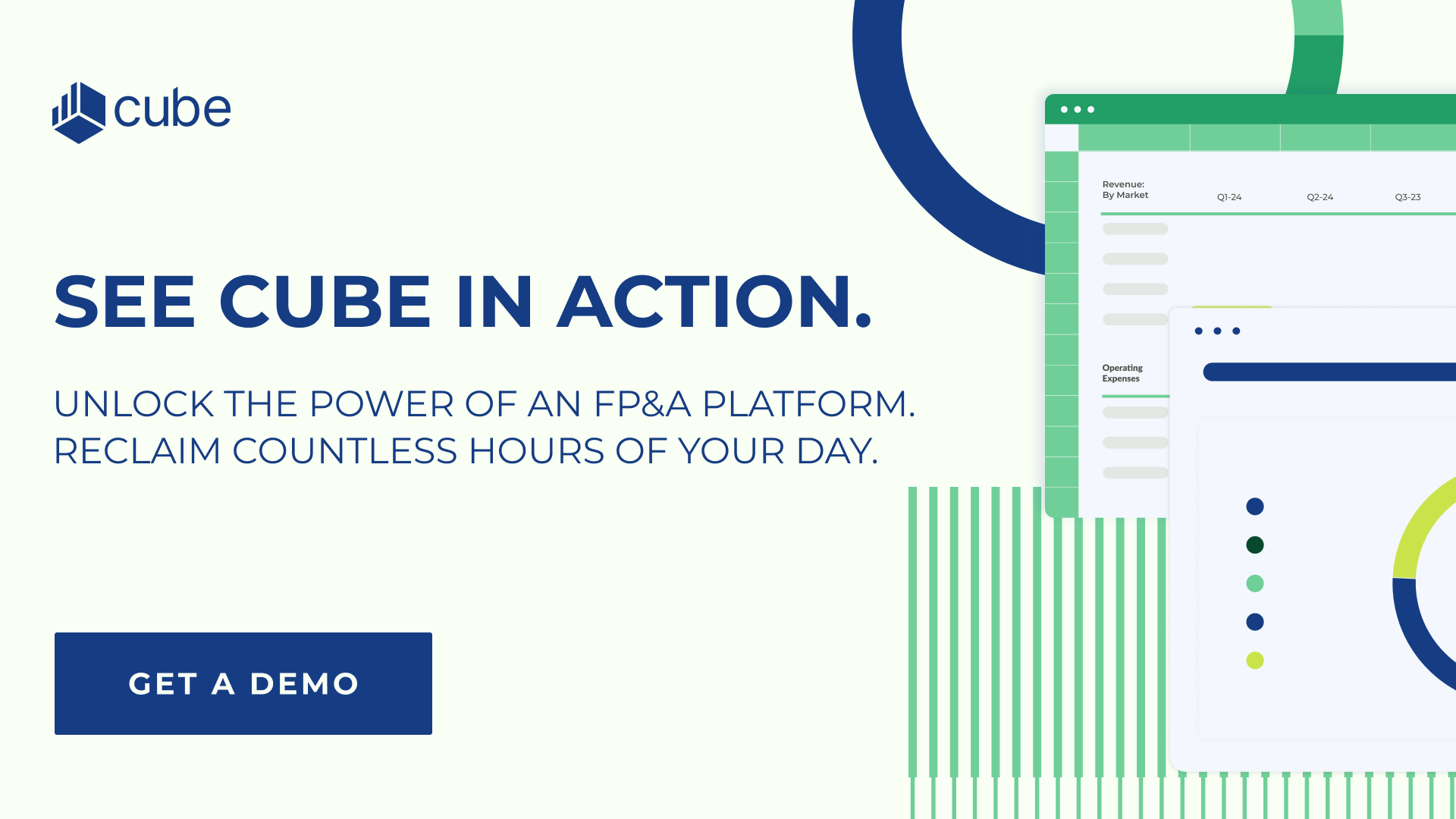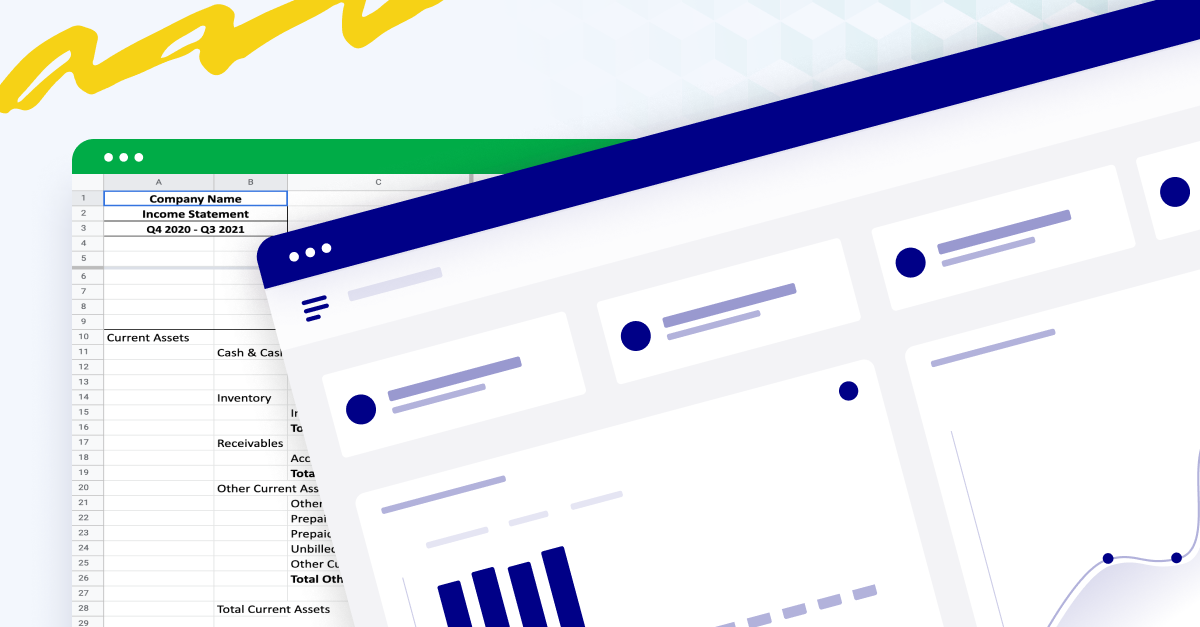Distinguishing variable expenses from fixed and semi-variable expenses
Your business's cost structure is composed of fixed, variable, and semi-variable expenses.
Understanding how these three expense types contribute to your overall cost structure allows you to identify opportunities for cost control and calculate crucial metrics, like profit margin and break-even point.
Fixed expenses remain the same from budget to budget and may include property taxes, Internet service, and rent payments.
Variable expenses, however, do not remain the same from budget to budget. This makes them tough to predict, especially if you're not using the right software. Examples of variable expenses include labor costs, materials, and credit card processing fees.
Variable expenses are usually tied to sales—the more you sell, the greater your variable costs. The problem with this is the greater your variable costs, the lower your revenue per unit. So, while variable costs are unavoidable, your goal should be to keep them as low as (realistically) possible.
Discretionary spending is a subtype of variable expenses. These are not tied to sales but vary based on management decisions. Some examples include advertising and marketing, as well as professional services.
Semi-variable costs aren't fixed or variable costs, but have features of both. Telephone bills are a great example—there's a fixed, monthly rate, as well as a variable rate depending on how many calls were made.

9 variable expenses examples
Now that you have a better idea of where variable expenses come into play, let's review some of the main types of variable expenses you should know to help you make more informed, impactful financial decisions.
1. Direct materials
Direct materials are the components you use to assemble products. These materials are identifiable with the product (think fabric in a piece of clothing). That's why they're one of the main cost drivers in product-based businesses.
How do you reduce direct material costs?
The most obvious way is by negotiating with your supplier. You might be able to secure cheaper prices per unit if you agree to a longer contract. You could also consider buying in bulk to secure a discount. However, be sure to match this as closely as possible with the amount of materials indicated by your sales forecasts, so you're not wasting money on carrying costs.
You should also look for alternative suppliers. The best scenario is to start a price bidding war that'll chip away at your rate until you get the best deal.
Finally, assess whether you could redesign your product(s). For instance, could you use less expensive materials without sacrificing quality? If so, do some test runs before making the leap.
2. Direct labor
Direct labor is the cost of labor that goes into manufacturing products.
To reduce these costs, focus on understanding your customer volume trends and optimizing work schedules. Many businesses have too many or too few workers per shift. If you can avoid this, you'll avoid extra payments for back-to-back shifts.
Next, invest in training. The goal should be to optimize efficiency so overtime is minimized. Only use overtime strategically, when you really need it. For example, you might use it to match seasonal demand, rather than (even temporarily) increasing headcount.
Speaking of headcount planning, it's much more expensive to hire new employees than to retain old ones. Keep your turnover rate as low as possible to optimize direct labor costs. To do this, make sure employees feel "seen". Offer individual praise, and let employees know there are opportunities for advancement.
Conduct surveys to find specific satisfaction problem areas. You should also conduct exit interviews to find the exact reasons employees are choosing to leave (e.g., workplace culture, pay, etc.).
3. Production supplies
Production supplies include oils, adhesives, and safety equipment, among many other items.
As with direct materials, the first thing you should do is negotiate contracts. You can get bulk discounts here, too.
Standardize production supplies to help streamline inventory management, and utilize predictive maintenance to minimize the amount of supplies required to keep equipment on the up-and-up.
Focus on your material handling processes. Can you reduce damage to production supplies? Are your storage and handling methods as efficient as they could be, or are you losing supplies to spoilage?
4. Commissions and sales incentives
Commissions can be a great way to reduce labor costs by increasing productivity, but you also need to keep them under control.
The easiest step you can take to do that is by implementing commission caps. This way, individual sales won't end up costing a huge amount. Establish tiered commission rates based on volume. This method emphasizes quality and quantity, balancing out costs and saving money.
5. Credit card processing fees
Credit cards—and the processing fees that come with them—are often an unavoidable part of doing business, especially if you're doing e-commerce. But did you know that not all credit card processing fees are essential expenses?
That's right—what you're charged depends on multiple factors, including your industry, the volume of transactions, and whether or not you're card present. All these expenses are put on top of your interchange rate.
If you have a physical location, offer incentives to customers who pay with cash to reduce these fees. When you do have to deal with card payments, however, there are some steps you can take to make them cheaper. First, settle payments as fast as possible (they'll start accruing interest if you don't settle them).
Avoid chargebacks, and use address verification to avoid fraud. Credit card companies like to see you taking this step and may reward you with lower rates.
6. Utility costs
The first thing you should do when looking at utility costs is review your contract to see if it has a consumption clause. These can penalize you for reducing energy costs, so you'll first want to let that expire or negotiate it.
To find out the primary contributors to your bill, conduct an energy audit. This can help identify inefficient equipment or insulation leaks, for example. Replacing your equipment could be a high initial investment, but will save you money over time.
Another strategy is to reduce peak demand. Peak demand refers to the hours of the day when electricity consumption is at its highest. To lower peak demand, allow employees to stagger their hours, and only use heavy equipment in off hours.
Doing this may allow you to switch your utility rate class, paying less money per kilowatt hour.
7. Shipping costs
Just as direct material costs are fundamental for product-based companies, shipping costs are fundamental for e-commerce companies.
Many shipping carriers offer lower rates for higher volumes. They'll also charge less for smaller boxes, so see how much you can reduce the dimensions while keeping it big enough to protect the product.
Businesses often spend too much on packaging. Besides optimizing your box sizes, reduce prices even further by using lightweight packaging. You can also standardize packaging with a few sizes and types.
Poly mailers are a great way to save money. These flexible, water-resistant envelopes are a prime example of lightweight packaging. Use poly mailers for products that won't be easily squashed, like clothing or books.
Use local carriers for local shipments, which will be cheaper than using a national provider. Additionally, you should know that third-party insurance is significantly cheaper than insurance provided by carriers like FedEx or UPS.
8. Sales and marketing expenses
Sales and marketing expenses, as the name suggests, include all costs associated with promoting your business and its products or services. They cover a wide range of activities, from traditional advertising (billboards, radio, print) to digital marketing efforts (website, social media, email campaigns), events, and promotional materials.
These costs can fluctuate greatly. Launching a new product, targeting a new market segment, ramping up for a seasonal sales peak, or even reacting to competitor activity can all lead to significant changes in marketing and sales expenditure.
For FP&A leaders, monitoring and managing these costs is crucial. Overspending on ineffective campaigns can drain resources, while underspending might mean missed opportunities. Therefore, understanding which strategies are delivering a good return on investment (ROI) is key to optimizing this variable expense.
It's not just about the cost—it's about the timing too. Spending on a marketing campaign today may not yield results for several months, making it critical to factor in these time lags when planning and forecasting.
Investing in analytical tools that provide data-driven insights into campaign performance, sales conversions, customer acquisition costs, and lifetime value can give FP&A leaders the tools they need to make more informed decisions about where to allocate sales and marketing budget.
9. Professional services
Professional services refers to costs associated with third-party expertise such as consultants, legal services, auditing, or IT specialists. These costs can significantly vary depending on the nature of the project, the duration, and the specific industry rates.
For businesses, these expenses are often necessary for specialized tasks outside the company's core competency, or for projects that require a temporary increase in resources. They could range from a one-time legal consultation on a contract to a year-long IT implementation project.
It's important to be conscious of these costs as they can become substantial. Understanding when to utilize professional services versus building internal capabilities is a strategic decision that can have long-term financial implications.
When engaging professional services, it's crucial to clearly define the project's scope and deliverables to avoid cost overruns. Also, considering the implications on your own budgeting and forecasting is key. These costs are often project-based and thus have a definite start and end, making them a bit easier to forecast than other variable expenses.
Forecasting variable expenses
One major goal of FP&A is to plan for the future. Since fixed costs never change, forecasting them is easy—it's forecasting variable costs that's the real challenge.
The simplest way to do this is by looking at your historical data. What were your variable costs in the past?
To get a bit more complex, you'd use regression analysis. Regression analysis is a statistical technique that examines the relationship between different variables. In this case, we'd be looking at how a specific variable expense (e.g., utility bills or costs) changes in response to the number of sales.
Once you determine the numerical relationship, you can then use sensitivity analysis to enter projected increases or decreases in sales and see how that affects your utility costs.
You can also look at how different factors affect variable costs. To do sensitivity analysis for shipping costs, you might look at how volume, distance, or weight affect them. You can then use dashboards to modify volume or distance, and see what the outcome is.
Analyzing variable expenses is a continuous process. Use variance analysis to determine the cause of the difference and ensure the accuracy of future budgets and forecasts.
Scenario analysis
The problem with historical data is that it doesn't account for possible changes in market demand, the economy, or other potential scenarios that could affect your variable expenses.
This is where scenario analysis comes in. Scenario analysis can prepare a company for best- and worst-case scenarios.
Let's start with a worst-case scenario. What if there's an economic downturn and one of your suppliers has to dramatically raise their prices? Would you be able to afford it? Do you have alternative suppliers lined up to mitigate the impact? If all suppliers are equally affected, could you swap out your materials for something cheaper?
A best-case scenario might be an economic boom. Thanks to your long-standing, healthy relationship with your supplier, you're able to reduce costs by 10%. How would you reinvest this money in the company to improve its short- and long-term position?
Scenario analysis provides you with contingency plans you can use in case a specific scenario occurs. If one scenario is particularly likely, you might also make the adjustments before the scenario occurs.
Leveraging technology for managing fixed and variable expenses
Technology—specifically FP&A software—is crucial in discovering how fixed and variable costs will affect your bottom line.
FP&A software makes data aggregation easy. Once you have the data, you can then model scenarios, perform sensitivity analysis, and display the main takeaways with powerful visualizations.
Conclusion: variable expenses can make or break your business
Understanding and effectively managing variable expenses is a crucial aspect of your role. Each example we've explored—from direct materials and labor, to credit card processing fees, sales and marketing expenses, and professional services—presents its own unique challenges and opportunities.
Remember, the more insight you have into your company's variable costs, the better equipped you'll be to navigate financial decision-making, increase profitability, and lead your organization towards sustainable growth.
Want to learn how Cube can help you manage your company's finances with ease? Request a free demo today.




.png)









.png)

-2.png)



.png)
.png)